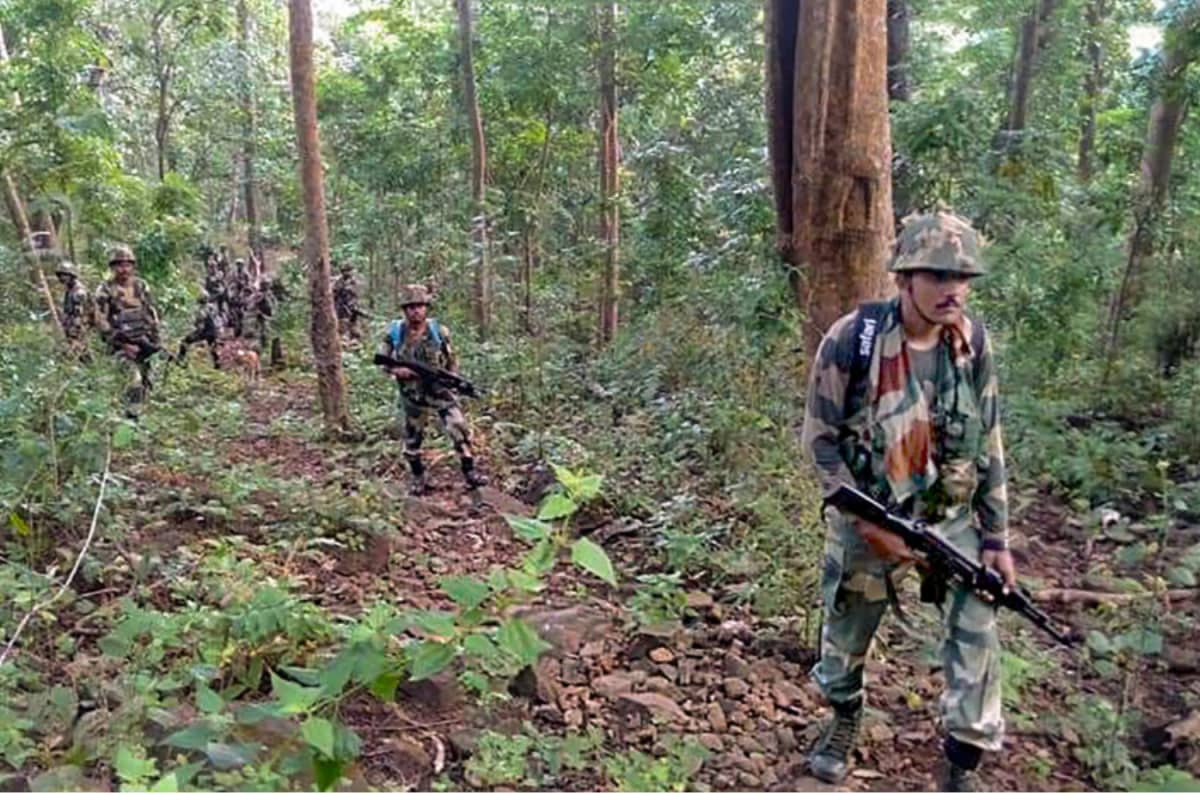

A major anti-Naxal operation in Chhattisgarh's Narayanpur district has resulted in the killing of at least 26 Naxalites. The encounter took place in the dense Abujhmad forest area, a known Naxal stronghold, with reports suggesting that a top leader may have been eliminated in the operation.
The operation was launched based on intelligence inputs about the presence of senior cadres from the Maoists' 'Mad' division. District Reserve Guard (DRG) jawans from four districts – Narayanpur, Dantewada, Bijapur, and Kondagaon – were involved in the coordinated effort to surround the Naxal leaders.
According to reports, the Naxalites initiated the gunfire, which prompted a strong retaliation from the DRG teams. A police official stated that the encounter began early Wednesday morning and was still ongoing. Initial reports confirm the recovery of a significant number of weapons and other materials from the site. However, there are also reports indicating that a police supporter was killed, and one jawan was injured during the operation.
This latest encounter follows a series of successful anti-Naxal operations in the region. Just two weeks prior, security forces eliminated 15 Maoists in the forests of Chhattisgarh's Bijapur district, near the Karregutta Hills along the Telangana border. These operations are part of an intensified effort to eradicate Naxalism from the country, with the Union government setting a deadline of March 31, 2026, to achieve this goal.
Earlier this month, security forces also reclaimed the Koragutta Hills, considered a strategic victory in the fight against the insurgency. The Karregutta Hills, located on the Chhattisgarh-Telangana border, had become a refuge for approximately 300-350 armed Naxal cadres over the past two and a half years. These cadres included members of the People's Liberation Guerrilla Army (PLGA) Battalion No. 1, their strongest military formation, the Telangana State Committee, and the Dandakaranya Special Zonal Committee. The area was also used as a base for Naxal training, strategy creation, and weapons manufacturing.
In April 2025, a joint operation by the CRPF and Chhattisgarh police along the Chhattisgarh-Telangana border resulted in the killing of three female Naxalites. This extensive offensive, involving nearly 5,000 troops and advanced technology, aimed to neutralize Maoist leader Hidma.
These recent successes reflect a more aggressive and coordinated approach by security forces, utilizing intelligence inputs and advanced technology to target Naxal strongholds. The government has also emphasized a "zero tolerance policy" against Naxalism, asserting a "ruthless approach" against insurgents who refuse to surrender.
Union Home Minister Amit Shah has hailed these operations as a significant step towards a "Naxal-free India." He commended the CRPF, STF, and DRG personnel for their bravery and valor in the face of harsh weather and difficult terrain.
While these operations have yielded significant results, challenges remain. The Naxal leadership, though weakened, continues to pose a threat, and the affected regions require sustained efforts to ensure long-term peace and stability. The government is focusing on building counter-IED capabilities for security forces, as IEDs have historically been a major cause of casualties in anti-Naxalite operations.
Moreover, there is an emphasis on integrating Naxal-affected areas into the mainstream of development. This includes providing opportunities for Naxalites to surrender and reintegrate into society. While security forces are adopting a "ruthless" approach against insurgents, some officials emphasize the need to bring them back to the mainstream, as they are Indian citizens.
The ongoing operations in Chhattisgarh represent a crucial phase in the fight against Naxalism. With a combination of strategic offensives, technological advancements, and a focus on development, the government aims to achieve its goal of eradicating Naxalism and establishing peace in the affected regions by March 2026.